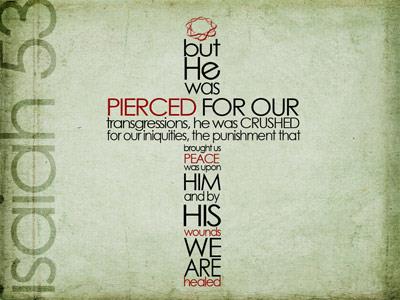-
Unveiling God's Heart Series
Contributed by Pat Cook on Nov 28, 2017 (message contributor)
Summary: This is about the Temple curtain torn in 2 when Jesus died. It shows us God’s heart of approachability, availability, and affection.
Mark 15:33-39 – Unveiling God’s Heart
(I got this sermon mostly from a pastor named Randal Earl Denny in his book In the Shadow of the Cross.)
Well, here we are. Since January we have been looking at The Life of Jesus. We have studied his teachings and observed His miracles. We have seen Him praised and we have seen Him scorned. Since the season of Lent started back on March 1, we have been following Him in what we call the Passion Week – starting at the Triumphal Entry on Palm Sunday, and concluding with His death on Good Friday. Today we are looking at one aspect of His death that’s meant to encourage your hearts. In it we see the heart of God, which beats strongly for you. Let’s read Mark 15:33-39.
You know, as a person gets more serious about God, his or her questions about God start to change. A skeptic of course tries to figure God out, to understand Him, to make sense of Him. And if God makes enough sense, then He’s believable. But a serious believer believes, even when God doesn’t necessarily make sense. He or she gives God the benefit of the doubt, that even though He may not always make sense to us, nonetheless He’s worth knowing. For a serious believer, knowing God is better than understanding Him.
This passage gives us a glimpse into knowing God better. The tearing of the Temple curtain, or Temple veil, shows us God’s heart for us. If we hurried too fast through that day, rushing into the wonderful truths of Easter, which we will spend time on after next week, we will miss a great lesson – unveiling God’s heart. Let’s look at this miracle that happened at 3PM on Good Friday afternoon.
The Temple curtains hung down about 60’ from the ceiling of the Temple, covering an opening 30’ wide. They were a woven fabric, interspersed with threads of gold and silver braided together. The curtains were about as thick as a man’s palm, several inches. Technically, there were 2 curtains.
You see, Temple worship was based on more or less concentric circles. There was the outer court, the court of the Gentiles, where Jesus upset the tables of the venders and the money-changers. This was the only place non-Jews could worship. From there was the Court of Women. Getting closer from there was where Jewish men would worship. Even further still was the Holy Place, where the Jewish priests would offer sacrifices. This was separated from the outer courts by a curtain.
But even further still was the Most Holy Place, called the Holy of Holies. This was, in the people’s minds, the dwelling place of God’s presence. In the original Temple built by Solomon – the Temple of Jesus’ day was actually the 3rd temple, built by the scoundrel Herod the Great, who had tried to kill Jesus as a baby – the ark of the covenant was kept in the Holy of Holies. The ark was the box made to keep the stone tablets of the Ten Commandments. On the beautifully decorated lid of the ark was the mercy seat, there the blood of an innocent, unblemished lamb was poured out on the Day of Atonement, nowadays called Yom Kippur, a Jewish holiday in the fall. The ritual sacrifice was for the atonement, the forgiveness of sins, of God’s people.
Once a year, on Yom Kippur, the high priest would enter the Holy of Holies behind the curtain. Granted, by Jesus’ time, the Ark was gone, vandalized by enemies of the nation of Israel. But the priests would carry on the ritual.
It was this curtain, the inner veil, that split in 2 when Jesus died. The presence of God was no longer limited to one person once a year. This miracle shows us 3 things about God’s heart for you and me.
First, the torn curtain shows us God’s approachability. You see, in people’s minds, the Temple curtain had excluded ordinary men and women from God. Everyone but the high priest was kept outside. Because of this, mystery surrounded God’s heart.
However, when Jesus died, the curtain was torn in 2. Sure, it happened at the same time as the earthquake, but there’s no way that an earthquake could rip free-falling fabric. And because it ripped, light flooded into the gloomy darkness. The mystery was opened wide. And all people were now admitted into God’s presence.
Because of this, no person can stand between us and God. We don’t need to go through a priest or church leader. In Christ every person has direct access to the presence of God. The torn veil is God’s invitation to approach Him.
You see, the tearing of the curtain represents for all of us the removal of all barriers and difficulties and discouragements in our approach to God. It shows that no one person is greater than another. It shows that clergy and lay people all have equal access to God’s presence. I am supposed to help you get there, but you can enter God’s presence without me. It doesn’t matter how much church exposure you had as a child: insiders and outsiders all can come to God alike.

 Sermon Central
Sermon Central



